A hundred & one thrilling trips around the Cycle of 5ths

The so called "Cycle (or Circle) of Fifths (or Fourths)" is one of the primary building blocks, melodically and harmonically, of what's become the basis of Western Music.
Derived from the natural harmonic series, the interval of a Fifth is the first overtone, or partial, that occurs after the octave, (i.e. C - C - G......). The Fifth has been "instrumental", with the advent of equally tempered tuning, in forming the Western sense of pitch, and ultimately - harmony.
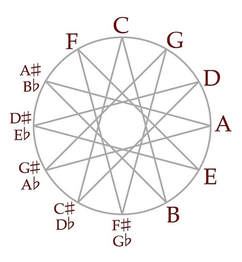
The Cycle of Fifths is usually one of the first concepts taught to beginning music students - at least it was in my case. From it, one learns not only the note letter names, but also the "key signatures ("flat" and "sharp" keys) and the order and direction around the circle in which the accidentals are added.
In fact, the Major scale itself is but a series of 6 Perfect 5ths (clockwise around the circle in a "sharp" direction - see graphic):
F-C-G-D-A-E-B = C Major
and counterclockwise in Perfect 4ths (in a "flat" direction):
B-E-A-D-G-C-F = C Major
Whether to call it the Cycle of Fifths or Circle of Fourths is irrelevant, since a P5 and P4 are inversions of each other, meaning that a P4 up is a P5 down. The harmonic and root movement of a descending P5 (V-I cadence) has a much stronger feeling of resolution and finality, hence the familiar ii-V7-I progression (of a P4 up and a P5 down; i.e. D min7 - G7 - C).
Virtually all Jazz standards and popular music are represented in this manner.
While the material in "The Cycle - 101" touches upon the basics, the exercises, sequences and practice motifs presented therein focus as well, on the relationships of tritone substitutions around the cycle of fifths and their correlation to the Chromatic Cycle, in a Jazz and improvisational context.
A quick look at the cycle graphic to the right shows twelve points, each corresponding to a note letter name. Taking the note C at the top of the circle, the note letter name directly opposite (at the bottom) is F# (Gb). This 180 degree "polar opposite" interval, exactly 6 semitones away is known as a tritone (aka augmented fourth, diminished fifth, flat-5, #4, etc.). Likewise: F & B, G & C# (Db), E & A# (Bb), etc.
If we were to swap every second note letter name in the Cycle of Fifths with its tritone counterpart from directly across the circle, the result would be.......the Chromatic Cycle!
C - G - D - A - E - B - F# (Gb) - C# (Db) - G# (Ab) - D# (Eb) - A# (Bb) - F
the Cycle of Fifths becomes
C - C# (Db) - D - D# (Eb) - E - F - F# (Gb) - G - G# (Ab) - A - A# (Bb) - B
the Chromatic Cycle.
The below example is a version of sequence #12. in the book, a chromatically descending finger exercise harmonized with dominant 7th chords, using simple root, 3rd & b7 configurations. The 3rd & b7 form the all important tritone, in each case.
As note names can be "tritone substituted" between Fifth and Chromatic Cycles, so can chord names; especially dominant 7th chords, as they share the same tritone (C7 = C-E-Bb, becomes Gb-Bb-E = Gb7). The 3rd and 7th swap positions, while the root becomes its tritone counterpart.
Range permitting, the tritones (3rd & b7) descend chromatically while the bass (root) ascends in P4ths and descends in P5ths around the cycle. Monk was probably "the master" when it came to using the cycle in this manner. His composition "Skippy" is a prime example, as well as his use of alternating whole tone scales on the bridge of "Rhythm-a-Ning".
Once I got into it, though, I realized how omnipresent the Cycle of Fifths is, as well as how fresh it can sound in combination with material from various scale systems and pitch sets. Based on the natural laws of physics, it's always there, conscious or not, working in the background – the “music of the spheres”.
Although "The Cycle - 101" contains 46 pages of pure music, the concentrated nature of the material makes it seem like the double of that.
Check out some sample pages below, then get on your Cycle......and ride!


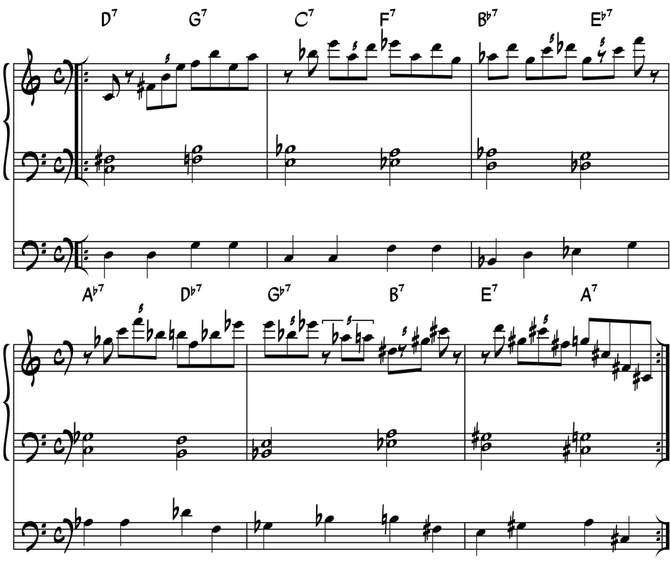
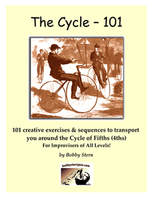
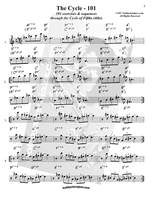
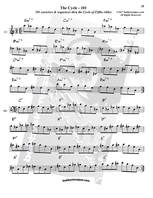
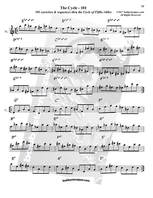

 RSS Feed
RSS Feed









